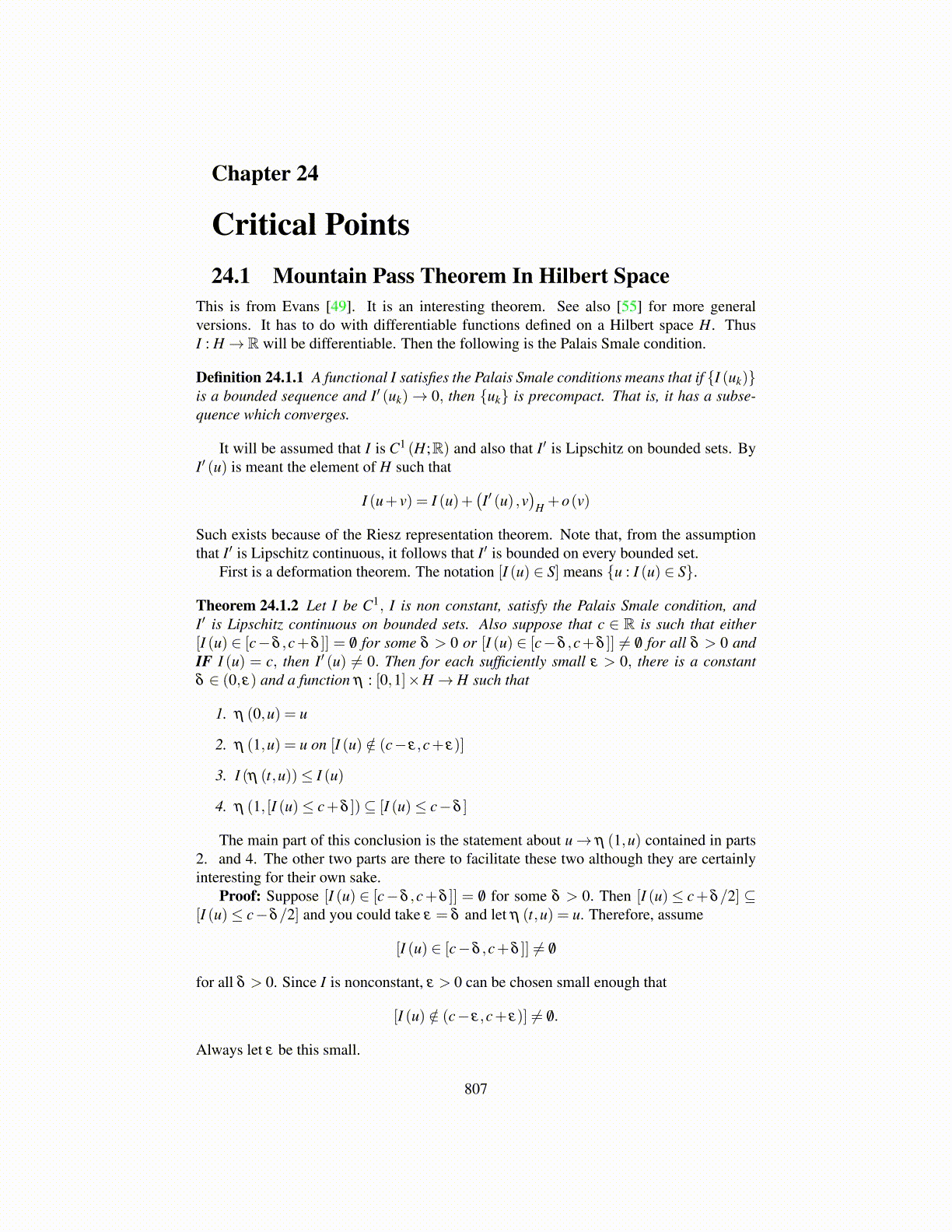
Chapter 24
Critical Points24.1 Mountain Pass Theorem In Hilbert Space
This is from Evans [49]. It is an interesting theorem. See also [55] for more generalversions. It has to do with differentiable functions defined on a Hilbert space H. ThusI : H→ R will be differentiable. Then the following is the Palais Smale condition.
Definition 24.1.1 A functional I satisfies the Palais Smale conditions means that if {I (uk)}is a bounded sequence and I′ (uk)→ 0, then {uk} is precompact. That is, it has a subse-quence which converges.
It will be assumed that I is C1 (H;R) and also that I′ is Lipschitz on bounded sets. ByI′ (u) is meant the element of H such that
I (u+ v) = I (u)+(I′ (u) ,v
)H +o(v)
Such exists because of the Riesz representation theorem. Note that, from the assumptionthat I′ is Lipschitz continuous, it follows that I′ is bounded on every bounded set.
First is a deformation theorem. The notation [I (u) ∈ S] means {u : I (u) ∈ S}.
Theorem 24.1.2 Let I be C1, I is non constant, satisfy the Palais Smale condition, andI′ is Lipschitz continuous on bounded sets. Also suppose that c ∈ R is such that either[I (u) ∈ [c−δ ,c+δ ]] = /0 for some δ > 0 or [I (u) ∈ [c−δ ,c+δ ]] ̸= /0 for all δ > 0 andIF I (u) = c, then I′ (u) ̸= 0. Then for each sufficiently small ε > 0, there is a constantδ ∈ (0,ε) and a function η : [0,1]×H→ H such that
1. η (0,u) = u
2. η (1,u) = u on [I (u) /∈ (c− ε,c+ ε)]
3. I (η (t,u))≤ I (u)
4. η (1, [I (u)≤ c+δ ])⊆ [I (u)≤ c−δ ]
The main part of this conclusion is the statement about u→ η (1,u) contained in parts2. and 4. The other two parts are there to facilitate these two although they are certainlyinteresting for their own sake.
Proof: Suppose [I (u) ∈ [c−δ ,c+δ ]] = /0 for some δ > 0. Then [I (u)≤ c+δ/2] ⊆[I (u)≤ c−δ/2] and you could take ε = δ and let η (t,u) = u. Therefore, assume
[I (u) ∈ [c−δ ,c+δ ]] ̸= /0
for all δ > 0. Since I is nonconstant, ε > 0 can be chosen small enough that
[I (u) /∈ (c− ε,c+ ε)] ̸= /0.
Always let ε be this small.
807